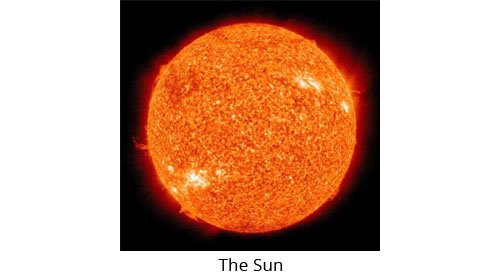The Sun
Stars are giant fireballs of gas that give off their own light. The sun is a medium-sized yellow star. It is a star in the Milky Way Galaxy. This spiral galaxy is like a big rotating pinwheel in space where stars, nebulae, planets, and asteroids are found.
The sun has a diameter of 863,040 miles or 1,392,000 km. It is at the center of the solar system and about 1.5 million km away from earth. Believed to be more than 4 billion years old and it makes up 98% of the solar system. It is the biggest object in the solar system and its mass about 750 times greater than all the masses of the planets combined. All the planets revolve around it. It has a powerful gravity that pulls all the planets and other objects toward it. This pull of gravity stabilizes and maintains the planets in their positions as they revolve around it. It takes millions of years for the heat from the sun's core to reach its surface. Whereas, it only takes less than ten minutes for the heat coming from the sun's surface to reach earth.
The sun consists of about 73% hydrogen, 25% helium, and 2% carbon, nitrogen, oxygen, neon, magnesium, silicon, sulfur, iron, and other elements. Its core is where all the heat it emits comes from. The core or the center of the sun is very hot due to nuclear fission, a process that produces energy, which earth receives as heat and light. The heat transfers from the core to the surface through the radiation zone.

